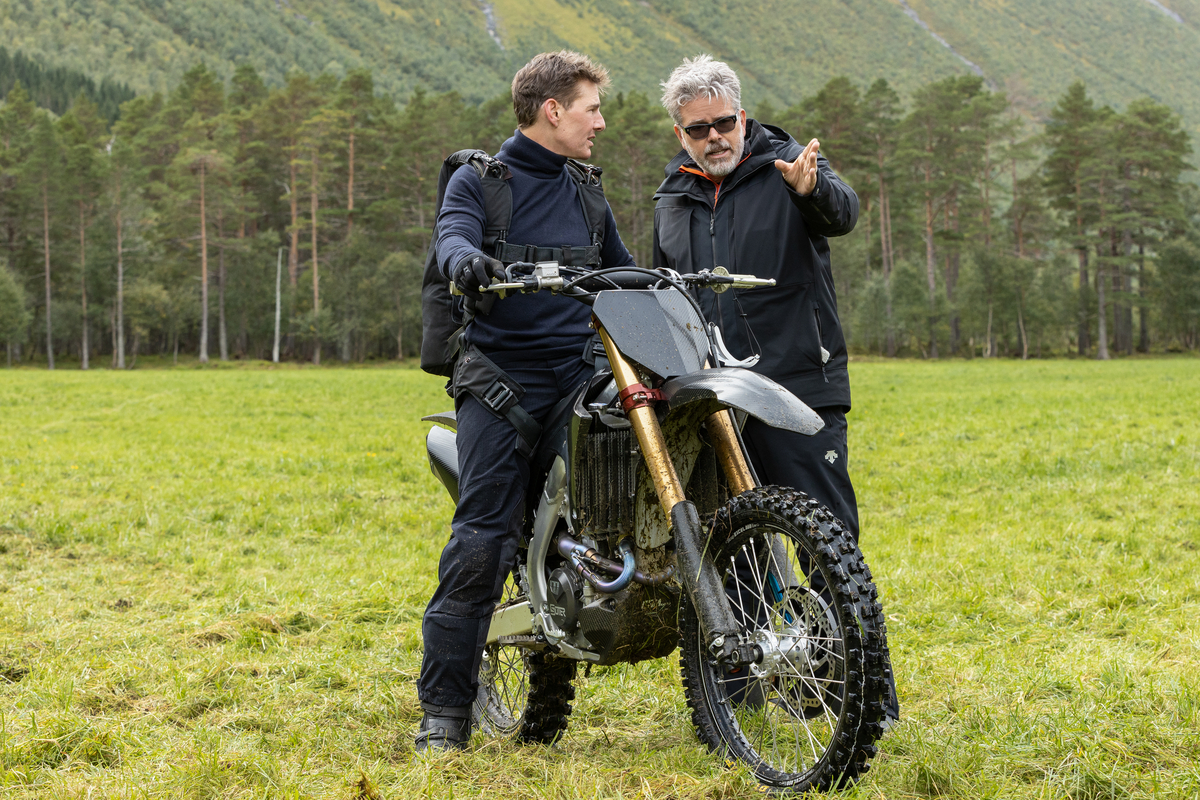INDEX
From the “muscle era” to the “wisdom and skill era.” Tom Cruise in action movie history
In your book, you advocated the “Two Toms” theory (Tom Hanks and Tom Cruise), where you pointed out Tom Cruise as a “man on the run” in Spielberg’s films compared to comedy actor Buster Keaton. Is it the only feature in Spielberg’s films or Tom Cruise’s overall potential as an actor?
Namba: Tom Cruise used to run a lot before the “Mission: Impossible” frahchise, so I have a feeling that he was originally aiming for action. The last scene in “The Firm” (1993, Sydney Pollack) is particularly impressive.
Even before that, I wondered if there had ever been an actor in the past who could do acrobatic tricks so brilliantly in films such as “Cocktail” that no one else could do. Like Billiards in “The Color of Money,” I think from the beginning he was aiming to do the action himself, Buster Keaton style, without using dubbing or stunts. I don’t think that has changed since he actually tried to pilot a fighter plane in “Top Gun.

Namba: What is also interesting about your career is that you did not make any action films for 10 years between “Top Gun” and “Mission: Impossible”. In between, there was “Days of Thunder” in which he played a car racer, but he did not do any real action films.
In my opinion, the late 1980s was the height of the so-called “muscle action boom,” when Sylvester Stallone and Arnold Schwarzenegger were tied at the top of the action star heap. They were followed by Steven Seagal and Jean-Claude Van Damme, and it was the “muscle star era. In other words, it was not an era of brilliant action, but an era of action with huge muscles, such as in “Rambo: First Blood Part II” (George P. Cosmatos, 1985) and “Commando” (Mark L. Lester, 1985), in which huge weapons such as machine guns were handled half-naked.
Namba: Tom Cruise has a bad advantage in this respect. He has a good body, but it is not a body built by bodybuilding and he is not tall. Tom Cruise probably recognized this accurately at the time. That is why, until the early 1990s, he focused on learning filmmaking by working with master directors. I think this is probably the most amazing part of his career-making.
When the time was ripe enough, he created his own production company, the first of which was “Mission: Impossible” in 1996. By 1996, Stallone and Schwarzenegger had completely retired from the forefront, and I think they saw the coming of the “age of action with wisdom and skill” like the “Mission: Impossible” series.
Why does authenticity play such an important role in Tom Cruise’s film?
Namba: The impression would be completely different if you think, “This is really done,” or “This must be CGI.” It is true that Tom Cruise sometimes lies (laugh), but as long as the audience does not think it is a lie, they may feel differently.
Namba: For example, at the beginning of “Top Gun Maverick,” he broke Mach 10, the maximum speed, but if it was an actual event, that must have been a lie because it was a big gold star for the US Air Force. But since the image of Tom Cruise, who can do anything by himself, is completely input into our minds, it seems as if he is really doing it.
In other words, if you make the audience think that Tom is doing everything, you can make them think that he is doing it even if he is not really doing it. In a sense, this is Tom Cruise’s skill. I feel that Tom Cruise is able to create an ideal relationship and bond between the audience and the actor in this way.

Tom Cruise’s stunt action exceeds fiction. Like the beginning of “Top Gun: Maverick,” felt like “You can do it, Tom!”
Namba: That’s right! I think, “Tom, you could do it. We expect that kind of fantasy, and Tom Cruise is the one who actually responds to it on screen.
























